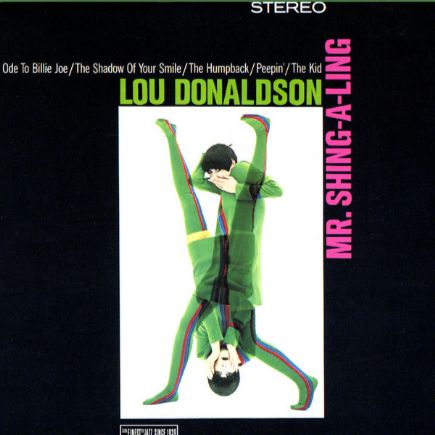The Shadow of Your Smile: entre mélancolie cinématographique et raffinement jazz
Chanson populaire également connue sous le titre Love Theme from The Sandpiper, The Shadow of Your Smile est née de la collaboration entre le parolier Paul Francis Webster et le compositeur Johnny Mandel. Elle est écrite pour le film The Sandpiper (Le chevalier des sables), réalisé par Vincente Minnelli et sorti en 1965, avec Elizabeth Taylor et Richard Burton dans les rôles principaux.
Interprétée par des chœurs dans la bande originale, elle remporte cette même année l’Oscar de la meilleure chanson originale. En 1966, la version enregistrée par Tony Bennett reçoit le Grammy Award de la chanson de l’année, consacrant son entrée dans le répertoire musical international.
L’importance historique de The Shadow of Your Smile tient autant à sa reconnaissance institutionnelle qu’au contexte artistique de sa création. La chanson se distingue par une combinaison subtile de lyrisme romantique et de raffinement harmonique, caractéristiques de la grande musique de film de cette époque.
The Shadow of Your Smile s’ouvre sur une tonalité mineure, instaurant une ambiance à la fois mélancolique et introspective. Les paroles, à la fois poétiques et chargées d’émotion, évoquent les souvenirs et la nostalgie d’un amour perdu.
L’ombre d’un sourire, le souffle d’un groove
Enregistrée le 27 octobre 1967 à Englewood Cliffs, l’interprétation de The Shadow of Your Smile par Lou Donaldson figure parmi les moments les plus singuliers de l’album Mr. Shing-a-Ling. Connu pour son ancrage dans le hard bop et le soul jazz, le saxophoniste alto s’approprie ici un standard romantique avec une élégance teintée de groove, révélant sa capacité à conjuguer douceur mélodique et sens du rythme.
Autour de Donaldson, un quintette d’exception donne vie à cette version inédite. Blue Mitchell, trompettiste au lyrisme subtil, partage le devant de la scène avec une retenue complice. À l’orgue Hammond, Dr. Lonnie Smith insuffle des nappes souples et enveloppantes, à la fois spirituelles et terre-à-terre, tandis que Jimmy Ponder apporte à la guitare une chaleur discrète, typique de l’esthétique soul jazz. Leo Morris, futur Idris Muhammad, ancre le tout d’un jeu de batterie fluide et aéré, propice à la respiration collective.
Loin d’une simple relecture de ballade, cette version de The Shadow of Your Smile se distingue par sa sensualité rythmique et sa richesse harmonique. Donaldson y adopte un phrasé souple, presque chanté, qui s’écarte du pathos pour privilégier l’élan naturel du chant instrumental. L’atmosphère, feutrée mais vivante, évoque plus le club que le salon, avec cette touche funky discrète qui colore l’ensemble.
The Shadow of Your Smile: entre melancolía cinematográfica y refinamiento jazzístico
Canción popular también conocida como Love Theme from The Sandpiper, The Shadow of Your Smile nació de la colaboración entre el letrista Paul Francis Webster y el compositor Johnny Mandel. Fue escrita para la película The Sandpiper (Castillos en la arena), dirigida por Vincente Minnelli y estrenada en 1965, con Elizabeth Taylor y Richard Burton como protagonistas.
Interpretada por coros en la banda sonora original, obtuvo ese mismo año el Óscar a la mejor canción original. En 1966, la versión grabada por Tony Bennett recibió el Grammy a la canción del año, consolidando así su lugar en el repertorio musical internacional.
La relevancia histórica de The Shadow of Your Smile se debe tanto al reconocimiento institucional que recibió como al contexto artístico de su creación. La canción se distingue por una sutil combinación de lirismo romántico y sofisticación armónica, rasgos característicos de la gran música cinematográfica de esa época.
The Shadow of Your Smile comienza en una tonalidad menor, creando una atmósfera a la vez melancólica e introspectiva. La letra, poética y cargada de emoción, evoca recuerdos y la nostalgia de un amor perdido.
La sombra de una sonrisa, el aliento de un groove
Grabada el 27 de octubre de 1967 en Englewood Cliffs, la interpretación de The Shadow of Your Smile por Lou Donaldson se cuenta entre los momentos más singulares del álbum Mr. Shing-a-Ling. Reconocido por su vinculación al hard bop y al soul jazz, el saxofonista alto se apropia aquí de un estándar romántico con una elegancia matizada por el groove, demostrando su habilidad para combinar dulzura melódica y sentido rítmico.
Rodeado por un quinteto excepcional, Donaldson da vida a una versión inédita y personal. Blue Mitchell, trompetista de lirismo contenido, comparte el primer plano con una complicidad discreta. Al órgano Hammond, Dr. Lonnie Smith aporta capas envolventes y flexibles, a la vez espirituales y terrenales, mientras que Jimmy Ponder imprime a la guitarra una calidez sobria, característica del soul jazz. Leo Morris, futuro Idris Muhammad, sostiene el conjunto con una batería fluida y ligera, que favorece la respiración colectiva.
Lejos de una simple reinterpretación baladística, esta versión de The Shadow of Your Smile destaca por su sensualidad rítmica y su riqueza armónica. Donaldson adopta un fraseo flexible, casi cantado, que se aleja del patetismo para favorecer el impulso natural del canto instrumental. La atmósfera, íntima pero animada, evoca más un club nocturno que un salón, con ese toque funky discreto que matiza todo el conjunto.
The Shadow of Your Smile: tra malinconia cinematografica e raffinatezza jazzistica
Brano popolare noto anche con il titolo Love Theme from The Sandpiper, The Shadow of Your Smile nasce dalla collaborazione tra il paroliere Paul Francis Webster e il compositore Johnny Mandel. Fu scritta per il film The Sandpiper (Castelli di sabbia), diretto da Vincente Minnelli e uscito nel 1965, con Elizabeth Taylor e Richard Burton nei ruoli principali.
Interpretata da cori nella colonna sonora originale, vinse nello stesso anno l’Oscar per la miglior canzone originale. Nel 1966, la versione incisa da Tony Bennett ricevette il Grammy Award come canzone dell’anno, sancendone l’ingresso nel repertorio musicale internazionale.
L’importanza storica di The Shadow of Your Smile risiede tanto nel riconoscimento istituzionale quanto nel contesto artistico in cui fu creata. Il brano si distingue per una raffinata combinazione di lirismo romantico e sofisticazione armonica, tratti tipici della grande musica da film di quel periodo.
The Shadow of Your Smile si apre in tonalità minore, instaurando un’atmosfera insieme malinconica e introspettiva. Il testo, poetico e intensamente emotivo, evoca i ricordi e la nostalgia di un amore perduto.
L’ombra di un sorriso, il respiro di un groove
Registrata il 27 ottobre 1967 a Englewood Cliffs, l’interpretazione di The Shadow of Your Smile da parte di Lou Donaldson rappresenta uno dei momenti più particolari dell’album Mr. Shing-a-Ling. Conosciuto per il suo legame con l’hard bop e il soul jazz, il sassofonista contraltista si appropria qui di uno standard romantico con un’eleganza attraversata dal groove, rivelando la sua capacità di unire dolcezza melodica e senso del ritmo.
Attorno a Donaldson, un quintetto d’eccezione anima questa versione inedita. Blue Mitchell, trombettista dal lirismo misurato, divide la scena con complice discrezione. All’organo Hammond, Dr. Lonnie Smith dispiega tappeti sonori morbidi e avvolgenti, spirituali e terreni al tempo stesso, mentre Jimmy Ponder conferisce alla chitarra un calore sobrio, tipico dell’estetica soul jazz. Leo Morris, futuro Idris Muhammad, sostiene il tutto con una batteria ariosa e fluida, ideale per una dinamica collettiva.
Lontano da una semplice rilettura da ballata, questa versione di The Shadow of Your Smile si distingue per la sua sensualità ritmica e la sua ricchezza armonica. Donaldson adotta un fraseggio morbido, quasi cantato, che rifugge il pathos per privilegiare la naturalezza del canto strumentale. L’atmosfera, intima ma viva, evoca più un club che un salotto, con quel tocco funky discreto che colora l’insieme.
The Shadow of Your Smile: where cinematic melancholy meets jazz sophistication
A popular song also known as Love Theme from The Sandpiper, The Shadow of Your Smile was born from the collaboration between lyricist Paul Francis Webster and composer Johnny Mandel. It was written for the 1965 film The Sandpiper, directed by Vincente Minnelli and starring Elizabeth Taylor and Richard Burton.
Sung by a choral ensemble in the film’s original score, the song won the Academy Award for Best Original Song that same year. In 1966, Tony Bennett’s rendition earned the Grammy Award for Song of the Year, cementing its place in the international musical repertoire.
The historical significance of The Shadow of Your Smile lies as much in its institutional recognition as in the artistic context of its creation. The piece stands out for its subtle blend of romantic lyricism and harmonic refinement—hallmarks of great film music from that era.
The Shadow of Your Smile begins in a minor key, establishing a mood that is both melancholic and introspective. Its lyrics, poetic and emotionally resonant, evoke memories and the longing for a lost love.
The shadow of a smile, the breath of a groove
Recorded on October 27, 1967, in Englewood Cliffs, Lou Donaldson’s interpretation of The Shadow of Your Smile stands out as one of the most distinctive moments on the album Mr. Shing-a-Ling. Known for his deep roots in hard bop and soul jazz, the alto saxophonist takes on this romantic standard with a graceful touch of groove, showcasing his ability to blend melodic tenderness with rhythmic finesse.
Surrounded by an outstanding quintet, Donaldson breathes new life into this unique rendition. Blue Mitchell, a trumpeter with understated lyricism, shares the spotlight with quiet complicity. On the Hammond organ, Dr. Lonnie Smith weaves smooth, enveloping textures—at once spiritual and grounded—while guitarist Jimmy Ponder adds a discreet warmth typical of the soul jazz aesthetic. Leo Morris, soon to become Idris Muhammad, anchors the ensemble with fluid, airy drumming that invites collective interplay.
Far from a simple ballad cover, this version of The Shadow of Your Smile stands out for its rhythmic sensuality and harmonic depth. Donaldson’s phrasing is supple, almost vocal, avoiding pathos in favor of the natural flow of instrumental expression. The atmosphere—intimate yet vibrant—feels more like a club than a parlor, subtly tinged with a funky glow that colors the whole performance.


